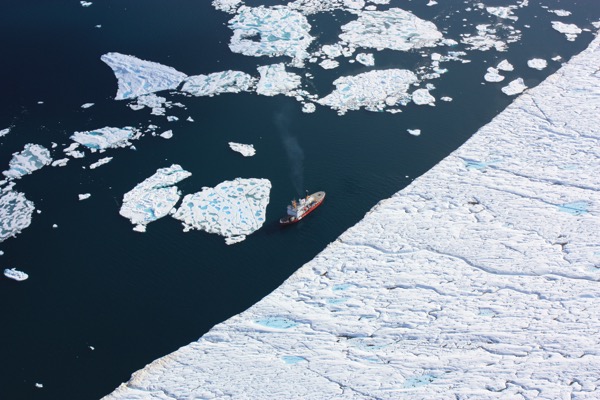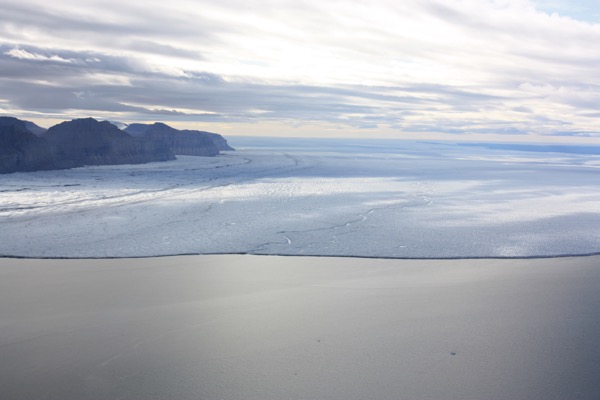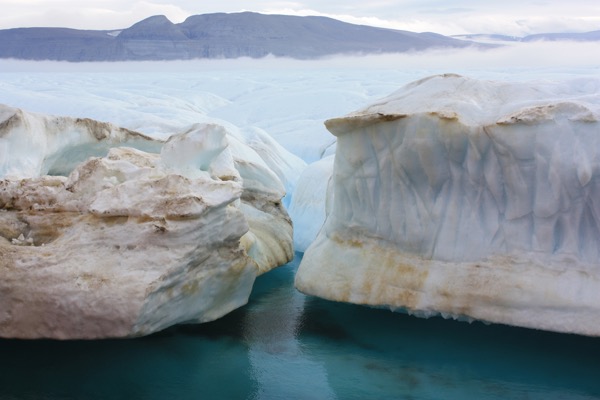Petermann Glacier data
Expedition to drill through floating Greenland glacier, transmit first ocean data from underneath
11:14 a.m., Aug. 3, 2015--University of Delaware researchers are part of an international research team that plans to drill through a floating Greenland glacier to capture the first-ever measurements of the ocean conditions underneath.
Petermann Glacier is one of the two largest remaining glaciers in Greenland that terminate in floating shelves. The glacier connects the great Greenland ice sheet directly with the ocean.
Research Stories
Chronic wounds
Prof. Heck's legacy
As part of the U.S.-Swedish expedition, UD oceanographer Andreas Muenchow and doctoral student Peter Washam are collaborating with researchers from Oregon State University and the University of Gothenburg to document changes in the grounded Petermann Glacier, its buttressing ice shelf and ocean conditions since the end of the last glacial period.
Washam is part of the ice-drilling team led by the British Antarctic Survey that will drill through 200-500 meters of glacier ice, a distance equivalent to one to two Empire State Buildings.
If all goes as expected, once through the ice, the research team will lower a cable equipped with sophisticated sensors through the floating glacier to collect real-time data about ocean temperature and salinity underneath.
The cable will connect the equipment to an automated weather station (AWS) on the glacier’s surface that will transmit hourly atmospheric and ocean data via satellite to Muenchow, who will lead the physical oceanography efforts aboard the Swedish icebreaker Oden. The AWS was designed and built by Kevin Brinson and David Huntley at UD’s Delaware Environmental Observing System.
“This will be the first time anyone has looked at the ocean below a floating glacier in Greenland, and the data will be available to anyone with an Internet connection,” said Muenchow, associate professor of oceanography in UD’s School of Marine Science and Policy, which is housed in the College of Earth, Ocean, and Environment.
He will use the data to describe how ocean heat and glacial melt water is distributed below the glacier in Petermann Fjord and adjacent Nares Strait. The researchers hope to trace how warm water from the Atlantic Ocean moves under Greenland’s many outlet glaciers.
One burgeoning question is whether the ice-shelf response is independent of, or linked to, variations in the grounded Petermann Glacier, ocean thermal conditions or relative sea level.
“Greenland is melting, but it is not entirely clear why. As more of its ice and water move into the ocean, sea level will rise,” Muenchow said. “We need to uncover what drives the melting of Greenland's glaciers in order to understand how our local sea level is changing over time.”
This is Muenchow’s sixth trip to Nares Strait, a deep waterway between northern Greenland and Canada, and Petermann Fjord since 2003, when he began monitoring glacial conditions there with funding from the National Science Foundation.
In 2010, Muenchow reported that a 100-square mile “ice island” four times the size of Manhattan had calved from Greenland's Petermann Glacier, an act of nature that hadn’t occurred in the Arctic since in 1962. He reported a smaller, but similar incident in July 2012, when a 46-square mile ice island broke off from Petermann Glacier.
His group published the first ocean data on the warming of Nares Strait in Oceanography’s Special Issue on the International Polar Year (2007-09) in 2011. His reported on ocean circulation for Petermann Fjord and interannual changes of the floating ice shelf of Petermann Glacier in the Journal of Geophysical Research (2012) and Journal of Glaciology in 2012 and 2014, respectively.
The current work is funded by NSF, with the UD-portion of the research supported by funding from the National Aeronautics and Space Administration (NASA).
To follow the UD researcher’s upcoming trip on social media, search the hashtag #Petermann2015, or visit Muenchow’s blog IcySeas.
Article by Karen B. Roberts
Photos courtesy of Jonathan Poole, CCGS, and Andreas Muenchow













